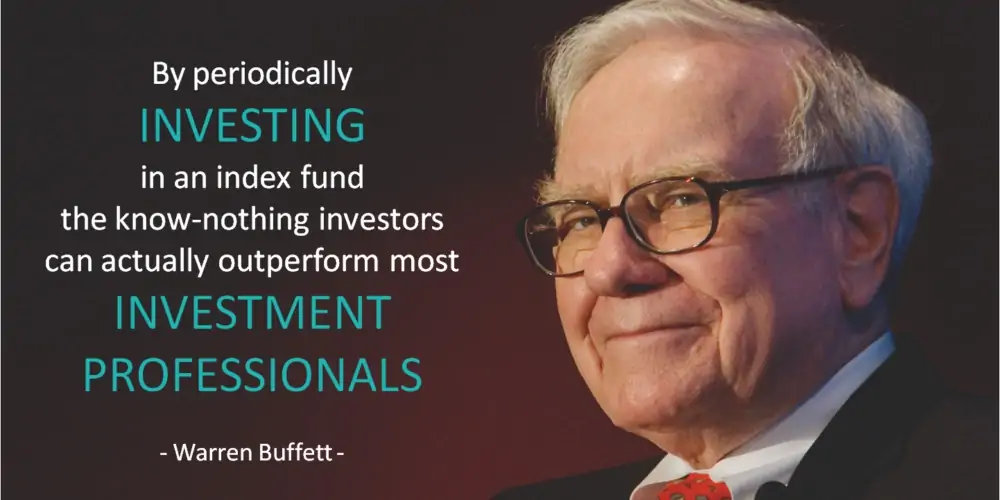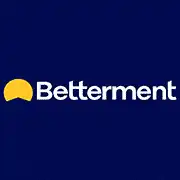When I reached college and started getting a feel for what I wanted to do as a career, I gravitated towards economics and finance. Before long, I got a head full of steam and decided to take a chance at investing for myself. Spoiler alert: this is a story of how I should have started by investing in index funds.
Leave it to itself, for the love of God. Leave it. – Colbert–Le Gendre – Journal économique, 1751
However, much like the children at Lake Wobegon, I thought I would be above average and realize some great investment returns. Much to my dismay, however, the early results led to many tough lessons. My first investment idea led to painful, yet informative losses.
Roughly a decade ago, satellite radio got a lot of buzz when two major competitors merged to form SiriusXM. The deal sold to the public offered hundreds of millions of dollars in cost synergies, creation of a formidable content powerhouse, and a larger share of the entertainment market.
The investing rationale seemed like a no brainer. I bought roughly $1,500 worth of shares. How wrong I was. Within months, the stock dropped nearly 97%. Talk about a scarring experience on my first investment. The story thankfully has a happy, but inadvisable ending. Being the young fool that I was, I thought my original decision was still right and I elected to purchase another stake in the company around the all-time lows.
“It’s said that a wise person learns from his mistakes. A wiser one learns from others’ mistakes. But the wisest person of all learns from others’ successes.”
There was no evidence to support my decision. This wasn’t investing. This was gambling.
Gambler’s Luck
I threw good money after bad and luck would have it that another company would step in to save the merger from failure and the stock took a turn for the better. I sold my position near breakeven and decided to take a hiatus from investing after a bruising start.
Before I started again, I wanted to reflect on what I had done wrong. In hindsight, I deduced my losses were attributable to thinking I had an edge when in fact, I really didn’t. To avoid this outcome again, I knew I needed to read a lot more about investing and the market. I developed five steps I needed to follow while learning how to invest money.
The Difficulty of Picking Winners
It’s extremely important to note that investing is not about how well a business runs. While it should be a functioning business, the real driver for stocks is their performance in relation to market expectations. In fact, savvy investing is based on identifying a mismatch between a stock’s current price and the expectations of where the stock could go.
When this mismatch exists, there’s an expectations gap.
Don’t be mistaken, finding and understanding a solid business are key elements to distinguish between companies rightly deserving of their current stock prices given all available information and uncovering hidden gems that have no business trading at current prices.
But most importantly, an intelligent investor recognizes the difference between the price paid for a stock and how much that stock is actually worth.
Just finding a great company isn’t enough when it comes to investing. Valuation, the price paid, and how it measures up to expectations are more important.
How to Gain an Edge
Some investors go to great lengths to gain an edge over the market. In recent years, a cottage industry of tech firms has sprouted up which provides “alternative data” to those willing to pay for it. These firms process and provide information on everything from weather to web searches to satellite imagery and sell it for some serious money to large investors looking to get an advantage.
But attempting to gain an edge is nothing new to the market. For years, astute investors have pored through annual reports looking for nuggets not priced into a stock. They look for subtle hints gleaned from changes in risk factor ordering, management commentary, or any number of other items.
Warren Buffett reads “500 pages [of corporate reports] every day” and says this knowledge builds up like compound interest. Others read even more.
What will be the new way of gaining an edge tomorrow? There’s no way to know for sure, but it may produce significant outperformance for those early to take up the practice, and then just as quickly competed away as many more pile on to adopt the practice.
Finding an edge is hard enough, but maintaining one is all the harder.
Investing in Index Funds Gives You Diversity and Humility
Picking individual stocks is fraught with all kinds of uncertainty. For starters, by investing in one stock, the investor takes on unsystematic risk, or the risk that comes from the uncertainty tied to investing in a single stock or industry.
Another term to describe this is “diversifiable risk.” As the name suggests, investors can mitigate this risk through diversifying their portfolios to include a wide range of stocks, sectors and industries. Doing so will avoid the risks associated to one specific stock or industry.
The same is true for some alternative investment options, which allow for a broader diversification into many assets instead of holding one.
For the risk-seeking investor, concentrating a portfolio in a handful of stocks or sectors can lead to larger gains as compared to a basket of securities. However, for the less-experienced (and even the professionals), this added risk can torpedo an investment portfolio.
Some investors find those gems and become the heroes, but few and far between have this sustained success. If consistently picking the best stocks were easy, everyone would do it and no one would think of Warren Buffett as the “Oracle of Omaha”.
It’s tempting to think that an investor’s job is to find the best stocks at all times by following stock news websites or analyzing and researching stocks, but this view presents all kinds of problems.
The better approach involves viewing investing as a spectrum of probabilities.
By that, I mean evaluating the probabilities of certain investment outcomes. For example, do you find it more or less likely that Amazon will double its revenues in the next 5 years?
- Why or why not?
- Do you have some unique insight that leads you to think this outcome is more or less probable?
- How does the market feel about that probability?
- The question to ask is, “What do I know about Amazon’s business that the market doesn’t?”
Obtaining material information not readily known by the public can affect your expectations for a stock and give you an advantage over the market. But, as mentioned above, many investors go a long way to establish an edge and thinking you have one when you really don’t might undermine your returns.
Sometimes having humility and avoiding mistakes can lead to a better investing outcome. You’d be better off learning about the differences between VTI vs. VTSAX and seeing which one better suits your investing goals.
Following that notion, I think about smart investing in a way that minimizes mistakes instead of pursuing maximum gains. I don’t like taking on uncompensated risk.
A portfolio requires a healthy balance of risk and reward as well as exposure to many different securities. I keep the following items in mind when investing:
- Steer clear of any and all avoidable risks. Don’t take on unnecessary risk when the probability of a better investment outcome doesn’t exist
- Be cautious and highly skeptical of your conclusions and whether you feel you possess some edge. It is much more likely you don’t have one when compared to the deep pockets spending endless time and money seeking the next edge
- Minimize the number of times you touch your portfolio. High portfolio turnover in search of better investments more often than not leads to negative consequences for your returns
- Avoid big mistakes. You stand to gain a lot more by doing nothing than thinking you have some edge (when you really don’t) and acting upon it
When Investing in Index Funds, Doing Less is More
So where does this leave me as an investor? As I outline above, if I aim to avoid unnecessary risk, always be skeptical that I possess an edge, touch my portfolio as infrequently as possible and minimize my mistakes, what options are available to me?
As a small investor, my best choice in investing is to follow the economic model made famous in France: laissez faire, French for “let it be”. What do I mean by this? Doing as little as possible by investing in index funds which are low-cost and passive. Why? Because it accomplishes all of those items and costs me little-to-nothing. Active investing is difficult. The majority of investment managers— people who do this for a living— routinely under perform their benchmarks.
Remember when I said to think of investing as a spectrum of probabilities?
The odds of active investing (stock-picking) outperforming a passive strategy have become increasingly slim, especially as index funds have become virtually free like index funds on Robinhood or the best Robinhood alternatives.
So what is the most reliable method to reaching investing success? In my opinion, with all that I have presented, it is utilizing the last real edge in investing: time spent in quality investments.
If you’re learning how to start investing as a teenager and looking to navigate investing apps for minors, I’d strongly encourage beginning your investing journey with index funds. These easily represent the best investments for teenagers, young adults and any other aged investor for all the reasons outlined above.
Investing in index funds which are low-cost and diversified compound my returns and outperform the majority of folks chasing higher returns by thinking they have an investing edge. They represent the surest path to build wealth and can act as income-generating assets with dividend distributions.
Investing in index funds avoids unsystematic risk through diversification, doesn’t rely on any unique insight you think you have and the market doesn’t possess, minimizes investment turnover, and avoids big mistakes. This investing style meets all of my criteria for realizing the best investment outcomes.
In investing, doing less is more.
Investing in Index Funds: How I Invest
Primarily, I use a handful of investing services to handle all of our after-tax and tax advantaged investments. For some, like our health savings account, we can only invest in the broker connected through my employer.
However, when I can choose the broker I use for investing, I consider the following my best stock trading apps recommendations based on personal experience and satisfaction.
You might consider using a robo-advisor like Betterment to automate the entire process. Simply answer a questionnaire about yourself and your investing goals and let Betterment handle the portfolio management on your behalf.
- The Betterment app gives you the tools, inspiration, and support you need to become a better investor.
- Start with as little as $10 and use the top-rated mobile app to set up automatic investing into diversified ETF portfolios.
- You can also invest in diversified preset cryptocurrency portfolios.
- Customize your risk tolerance and investment goals with guidance available at any time.
- By upgrading to Premium, you can unlock unlimited financial guidance from a Certified Financial Planner™.
- Hands-off investment management
- Diversified portfolio that automatically rebalances
- Low-cost investment selection
- Limited investment selections
- Limited crypto diversification in cryptocurrency portfolios












